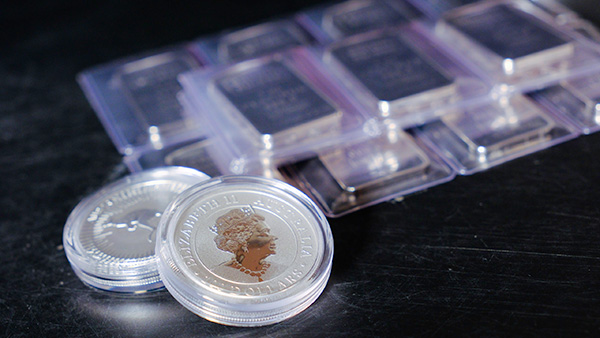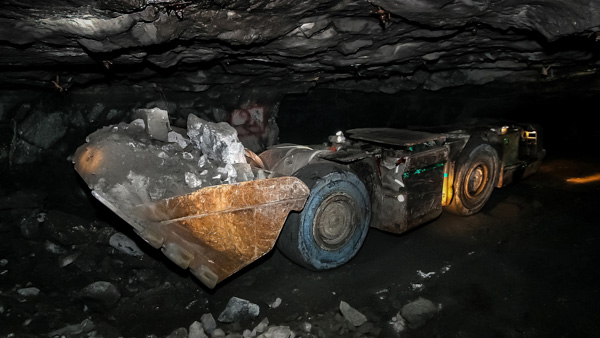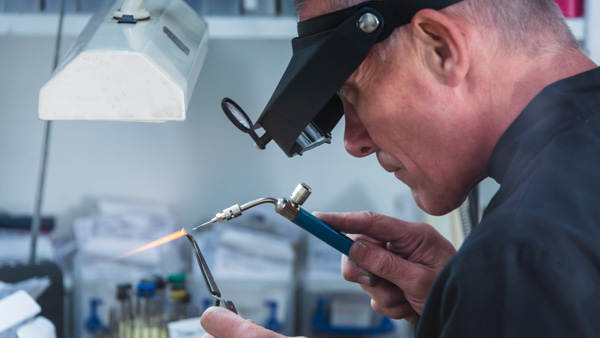Platinum: Facts about this Extremely Rare Metal that Might Surprise You

Platinum is the most known and most widely used of the six platinum metals. The chemical element has the symbol (Pt) on the periodic table. It has an atomic weight of 195.084 and bears the atomic number 78.
It is a very heavy, precious, silver-white metal that has a boiling point of 3,827C, and is extremely resistant to corrosion and chemical attack, though it does dissolve slowly in aqua regia (a highly acidic mixture of nitric and hydrochloric acids) to form chloroplatinic acid.
With a density of 21.45g/cm3, platinum is five times denser than gold and is estimated to be 30 times rarer. It is one of the seven rarest metals found in the earth’s crust (the others being gold, osmium, iridium, palladium, ruthenium, tellurium, and rhenium).
Rare as it is, platinum has secured its place in today’s industrialized society thanks to its unique catalytic properties and durability.
Why is Platinum Rare?

Found in the Earth’s crust at concentrations of only 0.005 parts per million, platinum is easily one of the rarest commodities we use in our everyday lives. In some alluvial deposits, it is found chemically uncombined as native platinum and as an alloy with the other platinum-group metals. The main platinum-bearing ores are sperrylite and cooperite, but these only produce about three to six grams of platinum ore per ton.
Platinum ores have been found primarily in only a few geological areas on Earth, which increases the difficulty of extraction. The main areas where platinum has been found are the Bushveld Igneous Complex in South Africa and the Absaroka Range in Montana, USA. It is said that the Merensky Reef in the Bushveld Igneous Complex alone has accounted for 75% of the world’s known platinum reserves.
The two other areas where platinum is mainly found are the Sudbury Basin, Canada, and near Norilsk in Russia. These are actually copper-nickel deposits, but the huge quantities of nickel ore processed make up for the fact that platinum is only present at 0.5 parts per million in the ore.
To put things in perspective: the annual production of platinum from mining globally is only around 200 tons, compared to about 4,500 tons for gold. In other words, the amount of platinum produced is only about 4.44% of the amount of gold we get annually.
Platinum is found in higher abundance on the Moon and in meteorites, which is why sites that have previously experienced meteor impact have a high probability of containing platinum.
Given that platinum mining is arduous and expensive, it’s easy to see why platinum is so highly valued in the market.
Discovery and Historical Uses of Platinum

Archaeologists have discovered traces of platinum in the gold used in artifacts found from ancient Egyptian burials from as early as 1200 BCE. However, it’s unclear the extent of the Egyptians’ knowledge of the metal, and there’s belief they simply did not recognize that there was platinum in the gold.
The first use of platinum is thus credited to the tradition of platinum-working in the La Tolita culture. Developed in the coastal region of Southern Colombia and Northern Ecuador between 600 BCE and CE200, the early Native Americans would combine gold and platinum powders by sintering, creating a gold-platinum alloy that was soft enough to shape. The platinum used here was not the pure element, but a naturally occurring mixture of the platinum group metals.
The first European reference to platinum appears as early as 1557, in the writings of Italian-French physician Julius Caesar Scaliger, who describes it as an unknown noble metal. The Spanish called the metal platina del Pinto because of its resemblance to silver. Interestingly, early Spanish actually saw platinum as an impurity in gold, and it was often thrown away. In fact, there was even an official decree forbidding the addition of “platinum impurities” to gold!

In 1741, Charles Wood, a British metallurgist found samples of Colombian platinum in Jamaica, and sent them to doctor and scientist William Brownrigg (pictured above) for further investigation. By 1750, Brownrigg presented a detailed account of platinum to the Royal Society, recognizing it as a new semi-metal. In his papers, Brownrigg noted that platinum has an extremely high melting point, able to be kept in for two hours in an air furnace - a heat that would run down cast iron in fifteen minutes. In his experiments, Brownrigg also found that by adding platinum to other metals like lead, silver, gold, copper, or tin to platinum, he was able to make the resulting mixture “extremely hard and brittle”.
In 1786, Charles III of Spain provided Pierre-Francois Chabaneau with a library and laboratory to research platinum. Chabaneau managed to remove various impurities from the ore but had yet been able to distinguish between the platinum group metals, leading to great inconsistencies in his results. At times, platinum seemed entirely incombustible, but if the sample was actually an alloy with other platinum metals like osmium for example, then it would be volatile. After several months, Chabaneau succeeded in producing 23kg of pure platinum and eventually started a business producing platinum ingots and utensils.
Key uses of Platinum today: Catalytic Convertors, Fuel Cells and More

Today, the industrial applications for platinum are numerous.
The lion’s share of platinum goes to the production of the catalytic converter you find in all motor vehicles. In 2021, 61% of platinum use globally went to the automotive sector, with chemical and jewelry the next biggest at 10% and 8% respectively. Platinum is indispensable to the catalytic conversion process that converts harmful carbon monoxides, hydrocarbons, and nitric oxide into carbon dioxide and water, thus greatly reducing the damage to our environment.
The preparation of hydrogen by electrolysis also calls on the platinum electrode, because platinum metal is inert and will not take part in the oxidation reactions in electrochemical cells. That further lends platinum well to be heavily used in EV fuel cells for electric cars.
In the petroleum industry, platinum wire or gauze is used in the cracking processes of oil refineries, and platinum catalysts play a major role in extracting gasoline from crude oil. Platinum’s chemical stability and resistance to corrosion make it indispensable in these industries. Meanwhile, emerging green technologies are also looking to tap on metal’s catalytic ability to create fuel cells for vehicles, buildings, and other portable devices that produce nothing but hydrogen and oxygen as by-products.
![]()
Platinum is used heavily in personal computing, particularly in the production of hard drive coatings and semiconductors. The addition of platinum to the cobalt alloy used on hard drives enhanced its magnetic properties, allowing data to be stored at higher densities. And that’s why we’re now able to have disks capable of storing over 500 gigabytes of data. With semiconductors, platinum's high electrical conductivity and resistance to corrosion are invaluable to high-performing chips, allowing researchers to push processing speeds even faster.
Platinum’s ability to withstand extremely high temperatures also lends itself well to the glass industry, where platinum crucibles are used to handle molten glass. Using platinum pots to handle the molten glass prevents contamination from iron oxide, allowing glass-makers to create optical glass of the highest degree of purity and freedom from color. Platinum thermocouples are also used to accurately monitor the temperature distribution with both melting and working components of tank furnaces so that glass of consistent quality can be produced.

Meanwhile, platinum’s luster, rarity, and durability have made it a popular choice for jewelry. It provides a secure setting for diamonds and other gemstones, and its flexibility offers jewelry designers the freedom to create designs of all shapes and sizes. For much the same reasons, platinum has also found its way into the world of watchmaking, with companies like Vacheron Constantin, Patek Phillippe, Rolex and Breitling all having limited edition models that feature the metal. Like gold, platinum neither tarnishes nor wears out easily, perfect for a treasured item that’s worn on your wrist daily.
Platinum as an Investment

Of course, we have to mention that platinum – like gold and silver – is considered a good investment vehicle and hedge against inflation. Platinum trades on the market under the code of XPT, while physical platinum bullion in the form of coins and bars is collected and traded by precious metals enthusiasts and savvy investors.
For investors, platinum represents an asset with high potential for growth. The constant demand from industrial production and jewelry fabrication for this extremely rare metal ensures that platinum will continue to be highly valued for years to come.
As with gold, platinum prices can be volatile, but the metal appreciates greatly in the long-term. Platinum has out-paced inflation over the past 20 years, largely because of its importance to industry.
Platinum is effective for portfolio diversification because its price movements have low correlation to stocks, bonds, and other assets. This allows investors an asset to balance their portfolio risk, as at least a part of their holdings is less affected by the market.
And during times of economic turmoil, the metal will rise in significance as a safe-haven asset, because platinum’s value is determined by the market, and not by any backing authority.
Conclusion
Platinum is one of the world's rarest metals. It’s also one of the most coveted due to its unique physical properties. The ability to enhance magnetism, the metal’s high durability, and its ability to reduce pollution when used in catalytic converters are things that are simply indispensable to industry.
If this article has got you interested to start investing in platinum, we've got just the guide for you.
You can also start your collecting journey by browsing the collection of bars and coins at our shop.